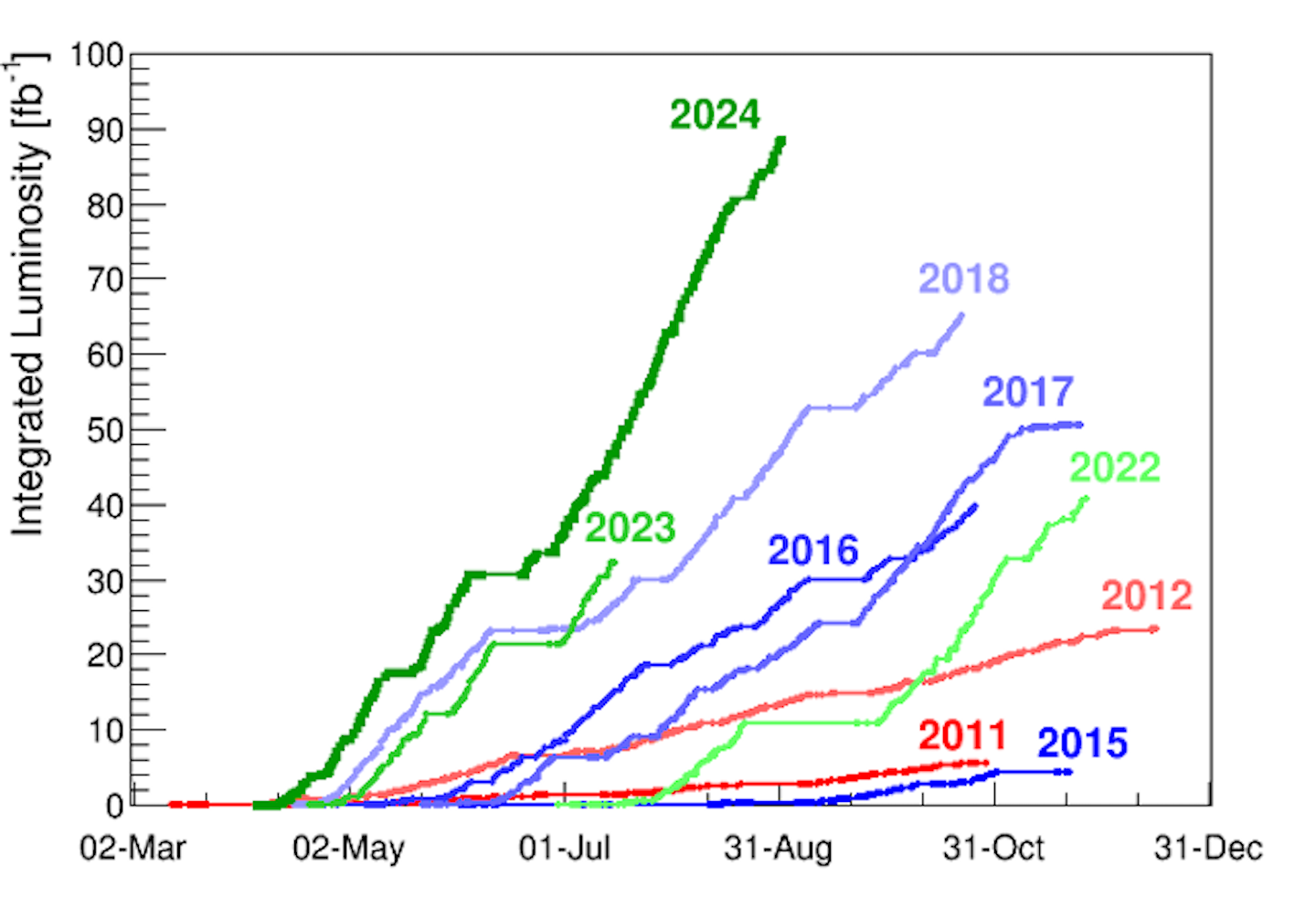LHC Run 3 began in 2022, with the recommissioning of the LHC at 6.8 TeV, resulting in the delivery of 39.7 fb⁻¹ of integrated luminosity, surpassing initial expectations. Luminosity is an important indicator of the performance of a collider: it is proportional to the number of collisions that occur in a given amount of time. The higher the luminosity, the more data the experiments can gather to allow them to observe rare processes.
In the second year of Run 3 (2023), we faced challenges due to faults that required extended repair and recovery periods, resulting in the delivery of only 31.8 fb⁻¹.
This year, though, luminosity production has exceeded expectations, reaching, on Monday 2 September, 88.9 fb⁻¹ for ATLAS and CMS, 7.6 fb⁻¹ for LHCb and 45.6 fb⁻¹ for ALICE. With approximately six weeks of luminosity production still ahead of us, the 2024 target of 110 fb⁻¹ for ATLAS and CMS is well within reach.

During long shutdowns (LS) and year-end technical stops (YETS), performance enhancements are implemented and commissioned with beam. Additionally, throughout the year, the LHC teams continuously explore performance margins, ultimately leading to increased luminosity production. Naturally, the total integrated luminosity each year also depends on the duration of the yearly proton run.
In 2022, there were effectively 70.5 days of proton physics, yielding an average integrated luminosity production of 0.56 fb⁻¹ per day. Despite the setbacks in 2023, where faults necessitated extended repair and recovery periods, the average integrated luminosity production reached 0.71 fb⁻¹ per day over 47.5 days of proton physics. As of Monday, 2 September, a total of 88.9 fb-1 has been achieved in 107 days of proton physics, resulting in an average integrated luminosity of 0.83 fb⁻¹ per day. And so, the integrated luminosity for Run 3 has already equalled the total integrated luminosity of the entire four-year duration of Run 2, as can be seen in the table below.


The LHC schedule has another 40 days of proton physics planned before transitioning to lead-ion physics. Theoretically, this could allow for the accumulation of an additional 33 fb⁻¹, potentially exceeding the 2024 target by 12 fb⁻¹. However, achieving this will depend on both the availability of the LHC and its subsystems and on the stable beam ratio that can be maintained in the coming weeks.






